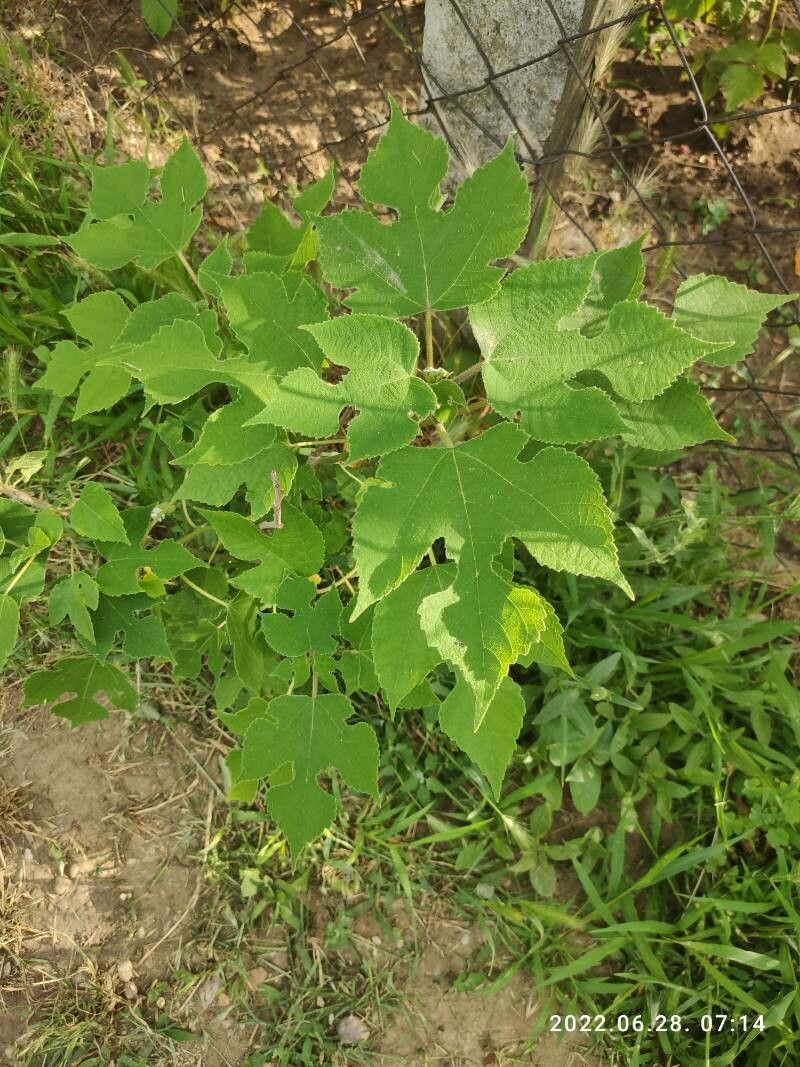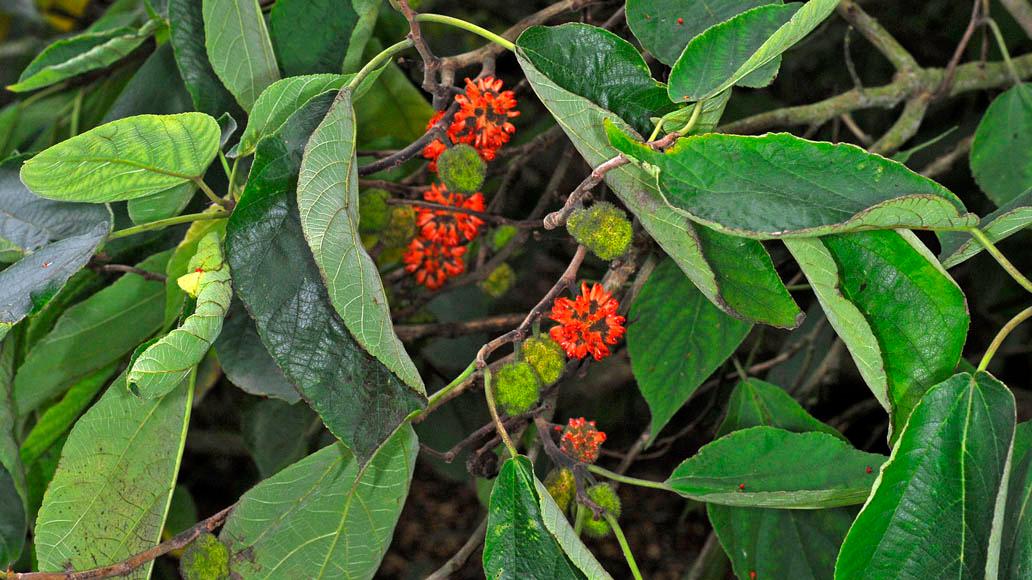Paper Mulberry
broussonetia papyrifera
Also known as: ["Tapa Cloth Tree","Broussonetia kazinoki"]
Overview
A deciduous tree native to Asia, known for its fibrous bark used in papermaking and textiles.
Benefits & Perks
["fast growing","wildlife attractant (bees, butterflies, birds)","drought tolerant"]
Botanical Classification
| Phylum: | Magnoliophyta |
| Class: | Magnoliopsida |
| Order: | Rosales |
| Family: | Moraceae |
| Genus: | Broussonetia |
| Botanical Name: | Broussonetia papyrifera |
Plant Characteristics
Basic Information
- Category: Trees
- Suitable Location: outdoor garden in temperate climates, or large indoor pot in cooler regions
- Suitable For:
- Is Weed: No
- Allergenicity: low
Environmental Needs
- Climate: {"temperatureRange":"10–35°C"}
- Hardiness: {"zones":"5–9"}
- Misting: rarely required, only if ambient humidity is very low
- Drainage: Fast-draining to prevent waterlogging.
- Soil Type: Well-draining, loamy soil with added organic matter. A mix of potting soil, perlite, and compost works well.
Maintenance Level
- Maintenance Level: moderate
- Toughness Level: high
- Pruning Frequency: Annually in late winter or early spring, or as needed to remove dead/damaged growth.
- Pruning Intensity: Moderate pruning to shape the plant and remove up to one-third of old growth if necessary.
Care Details
Ideal Sunlight Coverage:
Full sun to partial shade; 6–8 hours of direct sunlight daily, with some afternoon shade in hot climates to prevent leaf scorch.
Sunlight Tolerance Tips:
Acclimate the plant gradually to intense sunlight if moving from shade. Protect from harsh midday sun, especially in arid regions. Indoors, place near a south-facing window with filtered light.
Care Requirements
Care Difficulty
moderatemoderate
Sunlight
full sun to partial shade
Rotate plant weekly for even light exposure; use sheer curtains to filter intense sun; monitor for leaf burn.
Watering
every 7–10 days during active growth, reduce in winter
Water thoroughly until it drains from the bottom, allow soil to dry slightly between waterings, and avoid waterlogging.
Soil
well-draining, loamy soil with organic matter
pH: Slightly acidic to neutral, pH 6.0–7.0.
Ensure pots have drainage holes; avoid compacted soil; use mulch to retain moisture.
Temperature
Thrives in warm conditions, 65–85°F (18–29°C). Tolerates mild frosts but prefers temperatures above 50°F (10°C).
Protect from frost; ensure good air circulation in heat; adjust watering with temperature changes.
Fertilizing
every 4–6 weeks during spring and summer
Avoid over-fertilizing, which can burn roots; apply fertilizer to moist soil to prevent root shock; flush soil occasionally to prevent salt buildup.
Propagation
Methods
Stem cuttings or root cuttings. Softwood cuttings taken in spring or early summer root most readily.
Step-by-Step Propagation Guide
- Take a 4–6 inch cutting with at least two nodes, remove lower leaves, dip in rooting hormone, plant in medium, keep moist and warm.
Best Time: Spring or early summer when the plant is actively growing.
Environment
Warm, humid environment with indirect light. Maintain temperatures around 70–75°F (21–24°C) and high humidity.
Medium
Well-draining medium like perlite and peat moss mix or coarse sand.
Hormone
Rooting hormone is recommended to improve success rates.
Timeline
Roots typically develop in 4–8 weeks; new growth may appear in 2–3 months.
Tools Needed
Pruning shears, rooting hormone, propagation tray, misting bottle, plastic wrap.
Quick Tips
Keep cuttings out of direct sun; maintain consistent moisture; use bottom heat if available.
Pruning & Repotting
Pruning Guide
Method
Use clean, sharp tools. Cut just above a node or bud. Remove crossing branches and thin out dense growth.
Pruning Plan
Prune to maintain shape, encourage bushier growth, and remove dead or diseased wood. Best done in late winter or early spring before new growth.
Tools
Pruning shears, loppers (for larger branches), sterilizing solution.
Checklist
Sterilize tools, prune at the right time, make clean cuts, remove dead/diseased wood, shape the plant.
Repotting Guide
Best Season
Early spring before the growing season begins.
Pot Size
Increase pot size by 2–3 inches in diameter or one size up.
Method
Remove the plant gently, trim any circling roots, place in a new pot with fresh soil, water thoroughly, and allow to drain.
Suggestions
Repot every 2–3 years or when roots fill the container. Young plants may need repotting annually.
Checklist
Choose appropriate pot, prepare new soil, inspect roots, trim if needed, water after repotting, place in shade temporarily.
Advanced Care Tips
Watering Mastery
Watering Checklist
Check soil moisture, water deeply, ensure drainage, avoid wetting foliage, adjust seasonally.
How to Apply Water Properly
Water directly at the root zone, ensuring even moisture distribution. Water early in the morning to minimize evaporation and allow foliage to dry. Ensure excess water drains away to prevent root rot.
Watering Schedule Tips
Water deeply once the top inch of soil feels dry, typically every 7–10 days in spring/summer, reducing frequency to every 2–3 weeks in fall/winter. Adjust based on rainfall and humidity.
Soil Improvement
Add perlite or coarse sand for drainage; incorporate compost for fertility; ensure soil is loose and airy.
Temperature Stress Management
Signs of Temperature Issues
Chlorosis or leaf drop in extreme heat; stunted growth or leaf damage in cold stress.
Cold Stress
Low temperatures slow growth and can cause leaf discoloration or dieback. Prolonged cold may lead to root damage.
Solution: Move container plants indoors or to a sheltered location. Apply a thick layer of mulch to insulate roots. Avoid watering excessively in cold weather.
Hot Stress
Excessive heat can cause wilting, leaf scorch, or premature leaf drop, especially if combined with drought.
Solution: Provide shade during peak heat, increase watering frequency, and use mulch to retain soil moisture. Mist foliage in the morning if needed.
Fertilizing Guide
Fertilizing Checklist
Use balanced fertilizer, apply during growing season, dilute as directed, avoid contact with roots, flush periodically.
Fertilizing Method
Use a balanced, slow-release fertilizer in spring before new growth. Apply a diluted liquid fertilizer monthly during growing season (spring/summer), reducing or stopping in fall/winter.
Common Problems & Solutions
Toxicity Warning
Cats
Non-toxicBroussonetia papyrifera is not considered toxic to cats. The plant has not been associated with any toxic effects in felines.
⚡ Toxic If:
if eaten
Dogs
Non-toxicBroussonetia papyrifera is not considered toxic to dogs. There are no documented cases of toxicity in canines after ingestion of this plant.
⚡ Toxic If:
if eaten
Humans
Non-toxicBroussonetia papyrifera, commonly known as paper mulberry, is generally considered non-toxic to humans. The plant has been traditionally used for various purposes, including the production of paper and textiles, without significant reports of toxicity.
⚡ Toxic If:
if eaten
Frequently Asked Questions
Q: Is the Paper Mulberry toxic to pets?
A: No, it is non-toxic to dogs and cats.
Q: What is the Paper Mulberry used for?
A: Its bark is used for making paper and textiles, and it also serves as a food source for wildlife.
Q: How fast does the Paper Mulberry grow?
A: It is a fast-growing tree, making it suitable for quick landscaping projects.
Quick Reference
| Family: | Moraceae |
| Care: | moderate |
| Light: | full sun to partial shade |
| Water: | every 7–10 days during activ |
Get Expert Care Tips
Download the Plantious app for personalized care reminders and plant identification!
Google Play App Store








